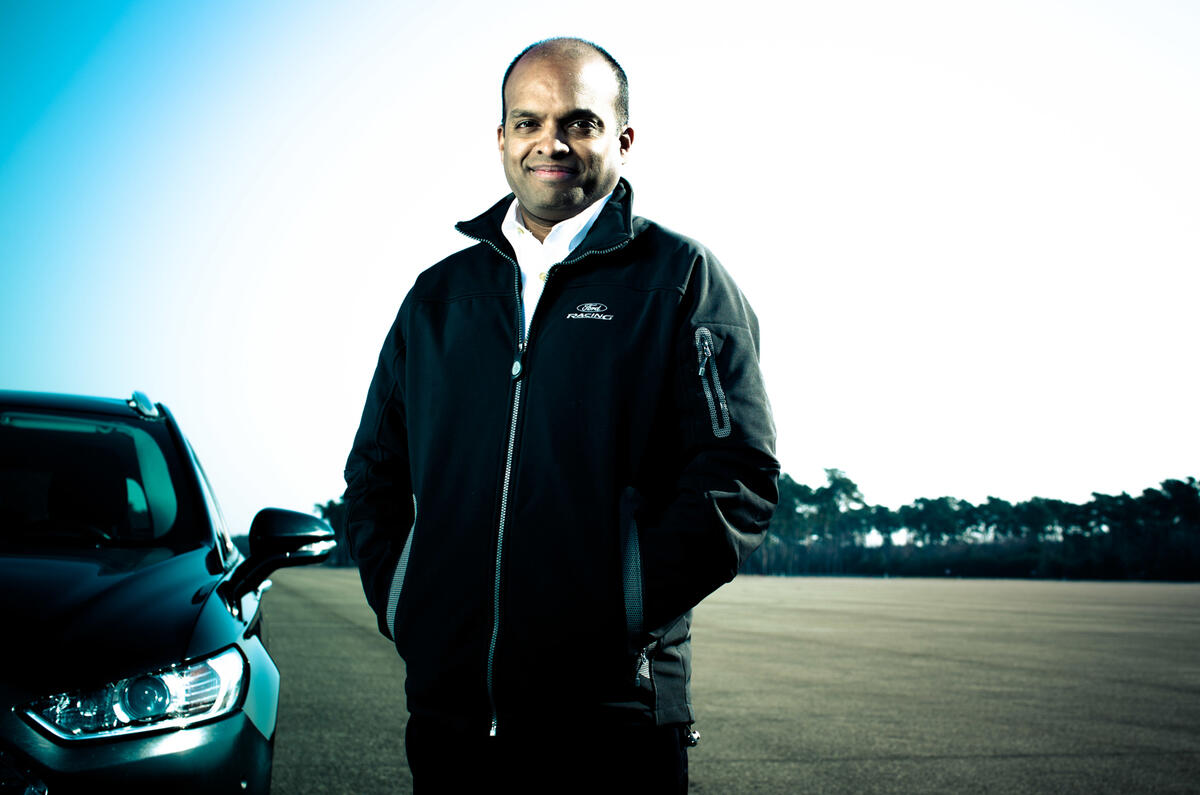We’re at Ford’s Lommel test track on the Belgian-Dutch border. Raj Nair is talking animatedly with a group of his engineers, making classic cornering gestures with his hands as they walk towards the glassy, chalet-like cabin the dynamics team maintains for conferences and meetings.
It is hidden well away from the admin offices, squeezed between an enormous skidpan called The Black Lake and the now-famous Track Seven handling circuit. Here, every European Ford of the past 20 years has had its steering and handling polished to market-leading levels.
A year ago, 48-year-old Nair was appointed to a job that has become iconic both within Ford and beyond. The title is vice president, global product development, which means that, across the 110-year-old group’s worldwide empire, Nair leads the teams that create every new model and takes personal responsibility for making them good.
Why does this job matter outside Ford? Because two recent incumbents, Richard Parry-Jones in the ’90s and Derrick Kuzak in the 2000s, brought enormous improvements to the driving quality of traditionally indifferent Fords – and then sold the idea of good dynamics to customers so effectively that Renault, PSA, Opel and even Volkswagen were forced to lift their game.
It is no exaggeration that because of Ford’s progress with the Ford Focus, the VW Volkswagen Golf, formerly a champion of the cheap-to-make torsion beam rear suspension, was forced to adopt a multi-link layout to match the Ford on ride.
Like the most modern managers, Nair is modest about his elevation and you get the feeling that self-deprecation has always come easily. “This is the dream job,” he says, “until you get it. I’m not sure I ever saw myself in a job so big.
"In fact, it’s best not to think too much about the number of people who technically work for me [later revealed as 20,000]. You’re better concentrating on the decisions you’ve got to make. And Ford has great people to help me with those. I’ve worked with a lot of them already.”
Nair is the ultimate car guy (he calls it “gearhead”). As a newly licensed kid in St Louis, he crashed his father’s Dodge estate, then persuaded him to replace it with “something we could both live with”: a Dodge Cordoba coupé with a 6.5-litre V8 and four-barrel carb.
At his old college – he won a place at the GM Institute in Flint, Michigan, now renamed Kettering University – they tell stories about him riding a motorcycle to Atlantic City, breaking his collarbone in an accident, then riding 700 miles home.









Add your comment